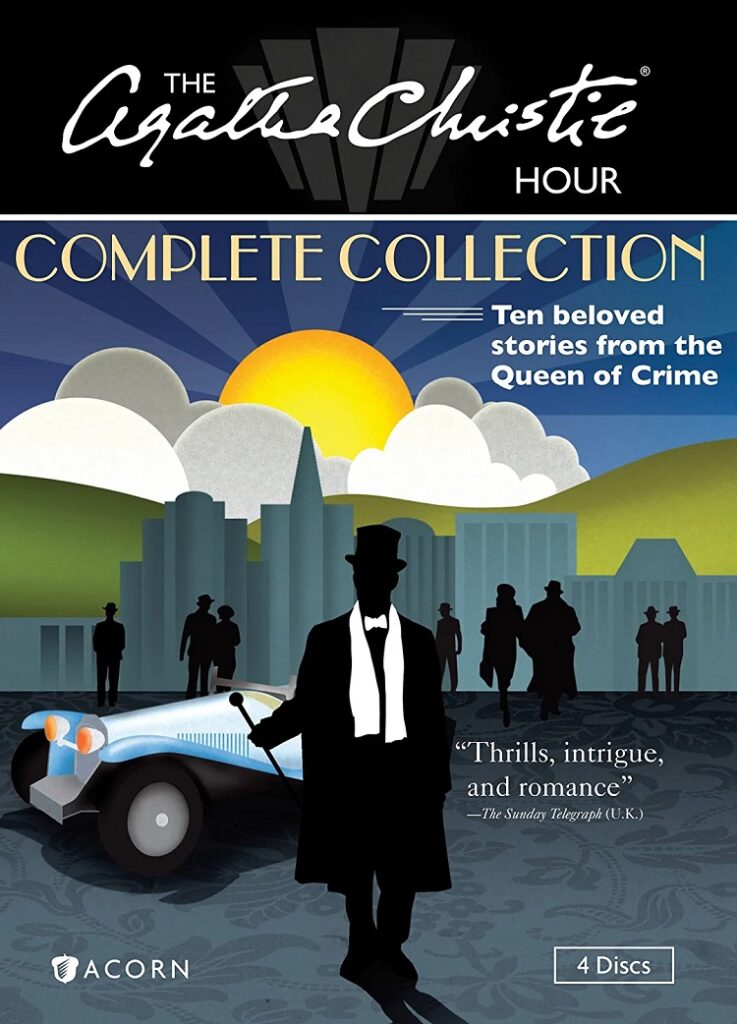
When I was a young television viewer, I had romantic notions about TV in Britain. The only British TV I had ever seen was Monty Python and The Young Ones (back when they used to run on MTV) and there was something different about the way it looked, never mind how wild the content seemed. The rare times I would watch Mystery! on PBS (which had an incredible credits sequence animated by Edward Gorey) I was struck by the same feeling of difference. Maybe I felt it was classier than American TV, or more refined.
Now, as an older, more sophisticated and observant viewer, I can tell part of what the difference was: it was super-cheap. Just about everything was shot on video, and not very good-looking video. Most American television with proper budgets (like prime-time dramas) were filmed on actual film stock. Video, and the look of video, was a soap-opera thing, and a lot of these older BBC shows look somewhat similar to soap operas, with fairly flat perspective, though admittedly much better lighting. These BBC shows have incredibly flimsy sets, and very obvious blue-screen for movement scenes (except for the times they get real English manors, in which case the “sets” look fabulous.)
The Agatha Christie Hour is a flashback to these simpler times when visual fidelity and seamlessness were…less prevalent. As the title implies, it consists of hour-long adaptation of several Agatha Christie short stories. None of Christie’s most familiar faces are involved here – no Hercule Poirot, no Miss Marple. There is one character who appears in two episodes (Parker Pyne, a sort of statistician-match-maker) but otherwise there is no continuity between the episodes, either in characters or actors.
Agatha Christie was amongst the most prolific (and certainly the most popular) authors of the 20th century, and though most of what she wrote were murder mysteries, her short stories ventured beyond that familiar (and often welcome) formula. The Agatha Christie Hour demonstrates this breadth, which may explain why there was never a second series. As an anthology show, it uses time as a connecting theme – the stories are all set in and around WWI, and the effect of the war on the British psyche is a thematic constant, if never foregrounded. Each episode is in a different genre: one’s a kind of ghost story, the next will be an amateur caught in a spy caper, then a weird story of multiple personalities… or is it possession? Only one episode can be said to contain a real murder mystery (or, for that matter, an actual murder.) While every episode is different, one constant in the series is a certain confident Britishness, of an empire near its height and enjoying it, a confidence that would be sorely tested and questioned by the war that was to come.
The war is most prominent in one of the most successful of these adaptations, “In A Glass Darkly.” Shortly befrore the onset of WWI, a young man, Matthew Armitage, has a vision of a woman in the mirror, being strangled by a man whose face he cannot see, but who has an enormous scar on the left-side of his neck. Going down to dinner, he is introduced to his best friend’s sister (the woman in the mirror!) and her fiancee (who has an enormous scar on his neck!). He tries to convince her not to get married… then he goes to war, comes back with a horrible scar on his own neck. The sister is waiting for him in the hospital, tells him she had fallen in love with him, and never married the other man. No three guesses for where the story ends up. It does not finish as predictably as it could have, but at least one of the “twists” near the end is obvious from the halfway point – and the show takes its sweet time getting there.
If there is a central problem with these stories (as opposed to the adaptations, which have their own issues) it is that they are old. And, being old, the concepts that they may have possibly introduced years ago have been played again and again, by less talented, more ham-fisted writers. The chief joy of these sort of genre stories is being surprised, and too often the twists are obvious just as soon as they are hinted at, at least to an audience that has grown up perhaps watching too much television and seeing too many movies.
Watching The Agatha Christie Hour, which aired in 1982 and lasted only 10 episodes, cheapness and staginess is the most prominent aspect of the production. Video does not age well, and each episode has obvious visual artifacts. The sets (again, when they weren’t shot in real English manors) look like they were put together seconds before the shoot, and would be taken down seconds after. In one episode, the wall visibly shakes when a character opens the door and enters.
The costuming and performances are similarly makeshift. Depending on one’s interest (or sense of charity) the homeliness of the sets and costumes, the talkiness of the scripts and the incredible cheapness of the few action sequences (which really should not have been attempted) are either embarrassing, or charming. Similarly, the performances have no pretense of naturalism: these are actors putting on a show. And sometimes it’s an entertaining show. Standout episodes like “The Fourth Man”, “The Red Signal” and “Jane in Search of a Job” don’t suffer too much from production limitations. “Jane” in particular has an amusing heroine, a fun royal impostor kidnapping plot, and a dash of romance and adventure. It’s all done with a touch of old-British style stiff-upper-lip, making the best of what limited resources they have for making an enjoyable hour of television. Not earth-shattering television, but mostly solid.